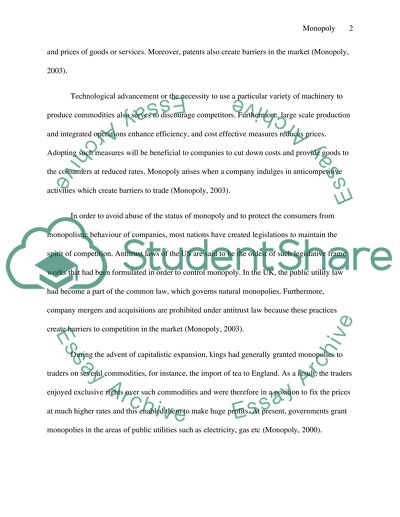Cite this document
(Causes that Lead to Monopoly Essay Example | Topics and Well Written Essays - 1750 words, n.d.)
Causes that Lead to Monopoly Essay Example | Topics and Well Written Essays - 1750 words. https://studentshare.org/macro-microeconomics/1541074-what-are-the-main-causes-that-lead-to-monopoly
Causes that Lead to Monopoly Essay Example | Topics and Well Written Essays - 1750 words. https://studentshare.org/macro-microeconomics/1541074-what-are-the-main-causes-that-lead-to-monopoly
(Causes That Lead to Monopoly Essay Example | Topics and Well Written Essays - 1750 Words)
Causes That Lead to Monopoly Essay Example | Topics and Well Written Essays - 1750 Words. https://studentshare.org/macro-microeconomics/1541074-what-are-the-main-causes-that-lead-to-monopoly.
Causes That Lead to Monopoly Essay Example | Topics and Well Written Essays - 1750 Words. https://studentshare.org/macro-microeconomics/1541074-what-are-the-main-causes-that-lead-to-monopoly.
“Causes That Lead to Monopoly Essay Example | Topics and Well Written Essays - 1750 Words”. https://studentshare.org/macro-microeconomics/1541074-what-are-the-main-causes-that-lead-to-monopoly.


